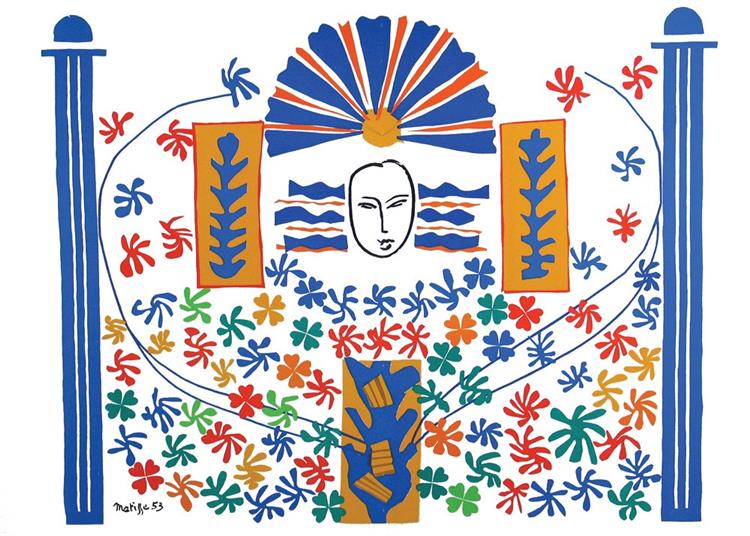Description
In the vast and varied career of master Henri Matisse, a work like "Apollo" from 1953 emerges as an unequivocal testament to his genius and artistic evolution. When contemplating this piece, it is impossible not to feel the impact of the simplification of forms and the vibrant explosion of colors, elements that define the artist's later years.
The painting "Apollo" is an eloquent example of Matisse's masterful use of the technique of "papiers découpés" or cut-out papers. In this work, the process of creation through cutouts of painted paper replaces the traditional use of brushes and canvases, a phenomenon that consolidated in the last stage of his career when, afflicted by physical limitations, Matisse began to explore new forms of artistic expression. This cut-out technique reveals a deceptive simplicity where the fluidity of the figures and the chromatic combinations become vehicles of profound aesthetic and spiritual significance.
Visually, "Apollo" is framed within an abstraction where defined contours and juxtaposed silhouettes are part of a carefully orchestrated composition. The vibrant color and harmonious contrast reflect Matisse's skill in transforming the simple into the sublime. The predominant use of blue and yellow, primary colors that Matisse frequently employs with mastery, endows the work with magnificent luminosity that captures and retains the observer's attention.
It is notable how the lines and shapes have been arranged to emit an abstract reference to the Greek god Apollo, a classical symbol of beauty and the arts. Matisse does not resort to a conventional figurative representation; instead, his approach is more evocative and symbolic, where the essence of mythological elements is transferred to a contemporary and abstract plane. This capacity for reinterpretation is precisely one of the distinctive traits that allowed Matisse to enjoy relevance that transcends the barriers of time.
The economy of elements and the purity of forms in this work are also an eloquent testimony to the modernist principle "less is more." The visual synthesis manages to be both a celebration of compositional clarity and an invitation to meditative contemplation. It is a fascinating challenge to try to decipher how something so seemingly simple can be imbued with such complexity and depth.
It is also intriguing to think of "Apollo" within the broader context of his work and the Fauvist movement to which Matisse belonged. Although the Fauvists were known for their bold use of color, the dialogue between Matisse's pictorial past and his experimentation with cut-out papers reveals an evolution that goes beyond Fauvism itself. The transition from the vibrant brushstroke to paper cutouts does not mark a rupture but the culmination of an artistic process in constant search of new forms of expression.
In summary, Henri Matisse's "Apollo," with its exquisite combination of color, form, and abstract symbolism, not only represents a masterpiece of modernist art but also a manifestation of the artist's personal evolution towards a purer and more essential expression. It is a celebration of complex simplicity and a palpable demonstration of how Matisse, even in his years of physical decline, continued to challenge the limits of creativity and artistic innovation.

